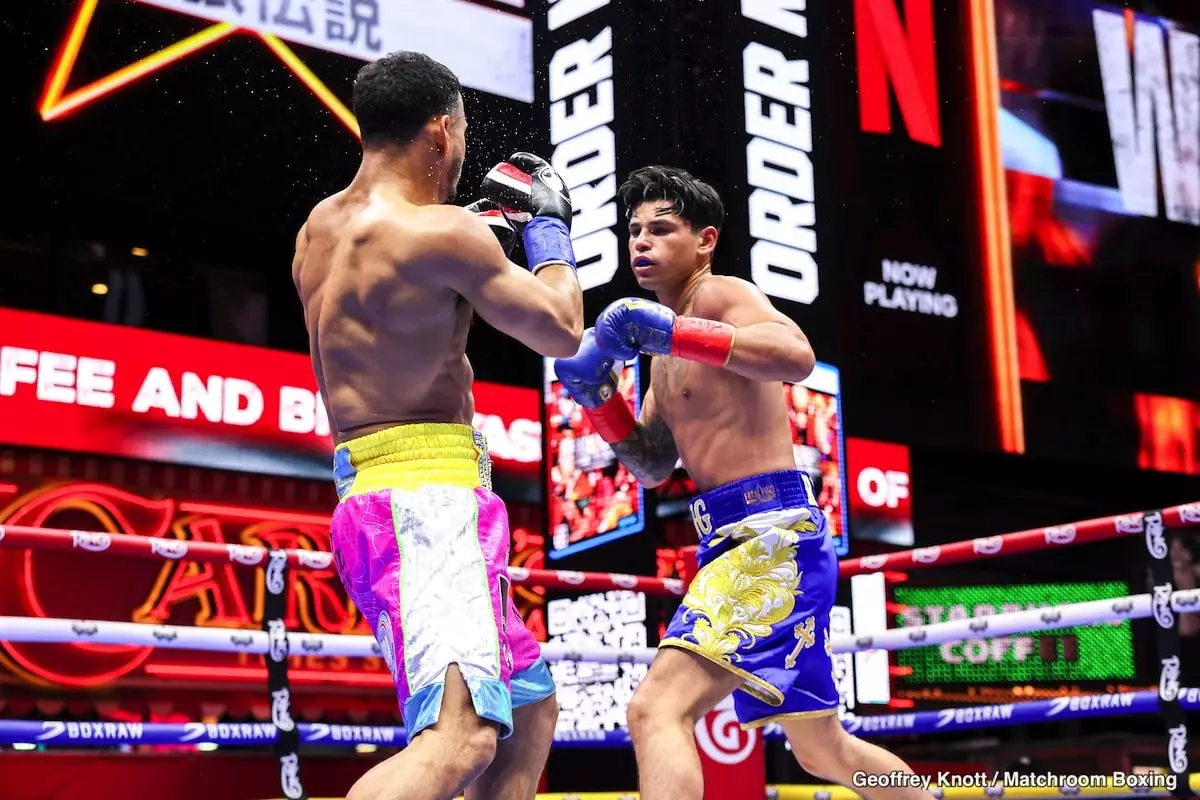The boxing world has been abuzz with speculation about Ryan Garcia’s next move after suffering a significant loss to Rolando ‘Rolly’ Romero. Promoter Oscar De La Hoya has made it clear that he isn’t interested in a rematch with Devin Haney, emphasizing that pursuing such a fight lacks any merit following Garcia’s previous victory over Haney. Instead, De La Hoya channels attention toward a more strategic approach: instructing Garcia to seek revenge against Romero. This perspective resonates within the boxing community, where not only wins but also the manner of victories shape a fighter’s reputation and marketability.
De La Hoya’s comments come at a time when Garcia’s star power has dimmed, primarily due to the nature of his recent defeat, which left fans and analysts alike questioning his resilience and skill. The promoter’s insistence on avenging the loss to Romero indicates a profound understanding of the psychological aspects of boxing. For Garcia to reclaim his status as a formidable contender, he must first address the lingering sour taste of defeat, which could haunt him if left unresolved.
The Impact of Recent Performance
Garcia’s performance against Romero raises valid concerns regarding his fighting style and mental readiness. His lackluster showing—a fight characterized by timidity rather than aggression—drew criticism. It’s not just the defeat that stings but how it unfolded; fans expect to see fighters display heart and tenacity, not to stall or avoid confrontation. The damage done to his public perception is significant—taking this into account, De La Hoya’s advice to focus on Romero instead of immediately retracing steps back to Haney makes more strategic sense.
Moreover, promoting Garcia to jump back into a high-stakes showdown with Haney would be precarious. Certainly, Haney is a skilled athlete, but his fighting style—often described as evasive rather than confrontational—does not promise an exciting bout and risk averting attention from Garcia’s need for a morale-boosting fight. The boxing landscape is littered with fighters who rushed into rematches without addressing their weaknesses, subsequently crippling their careers.
The Crucial Need for a Confidence Builder
Oscar De La Hoya’s sound reasoning emphasizes the necessity of a “confidence builder” following a grueling loss. It is understood in boxing that a fighter’s mental state is just as pivotal as physical abilities. Garcia will not merely be stepping into the ring; he’ll be battling the psychological barriers an unexpected defeat presents. Facing a less formidable opponent, especially one that allows him to score a decisive victory, could serve as a stepping stone back to prominence.
De La Hoya’s assertion that Garcia should fight a less intimidating opponent underscores a critical element of athlete management: the importance of pacing one’s fight trajectory. While temptation looms to immediately avenge losses against formidable foes, the prudent path often involves rebuilding confidence first through less strenuous bouts. Garcia’s next fight must be a stage designed to bolster his self-assurance while allowing him to fine-tune his skills and strategy.
Addressing Future Matches: A Broader View
The dynamics in the lightweight division are particularly intense, with talents like Haney constantly under the spotlight. However, the boxing community is increasingly vocal about preferring to see exciting matchups rather than technically proficient fighters who rely more on movement than compelling exchanges. De La Hoya’s criticism of Haney as a “runner” brings to light a growing frustration among fans—the desire for fighters who are willing to engage. Garcia versus Haney might not provide the clash that enthusiasts seek, rendering the appeal of this potential rematch naturally limited.
De La Hoya’s observations remind us that in the sport of boxing, the attributes of style and charisma are just as essential in the eyes of fans as technical proficiency. Garcia’s return must not only contend with winning fights but also with making a statement as an electrifying presence within the ring. It’s a balance he must strive to achieve—merging skill, aggression, and appeal.
As De La Hoya prepares to guide Garcia’s next chapter, the mission remains clear: focus on rebuilding strength through carefully selected opponents before confronting seasoned adversaries. Garcia’s journey is a stark reminder of the need for resilience in boxing, a sport where each fight can transform or tarnish a legacy. Through strategic matchmaking and an emphasis on personal growth, there’s potential here for a comeback narrative that resonates with both fans and the ever-vigilant boxing media.

